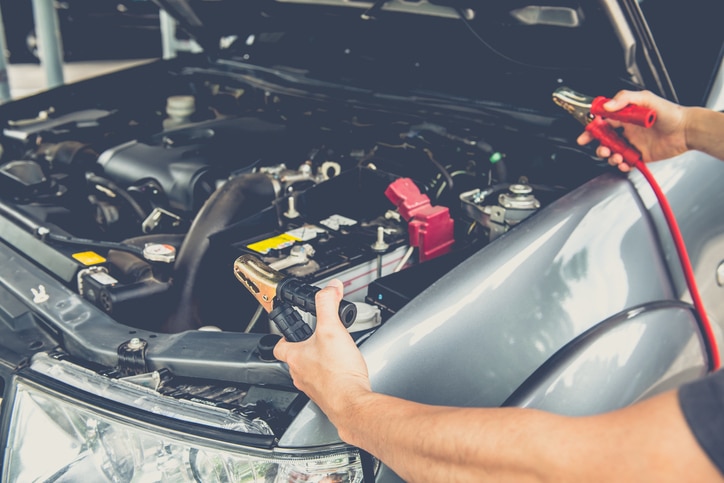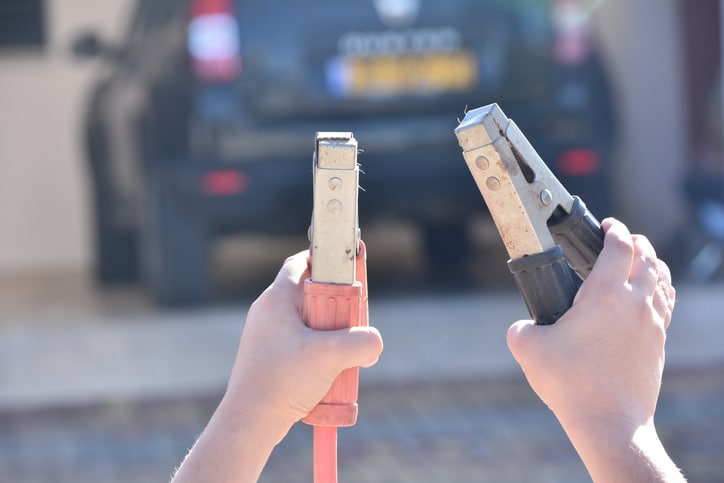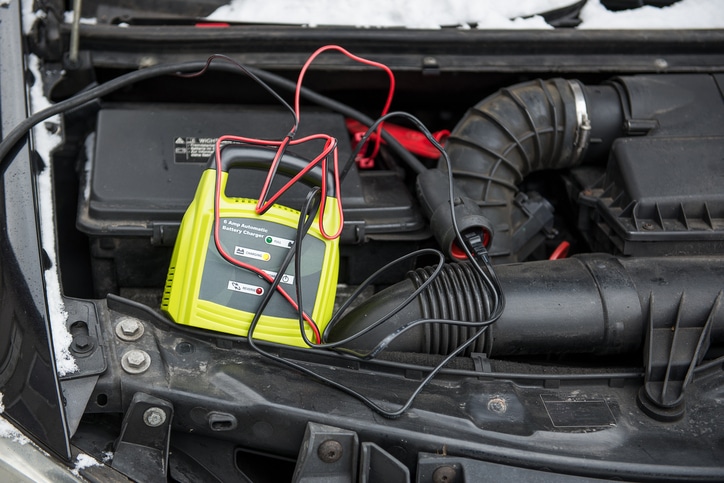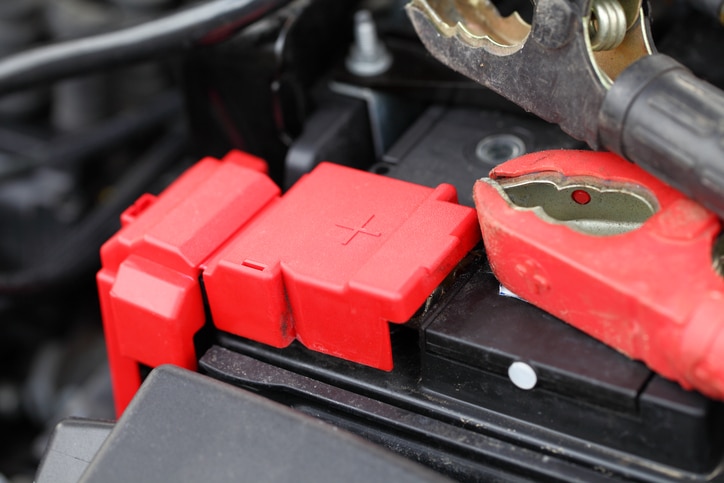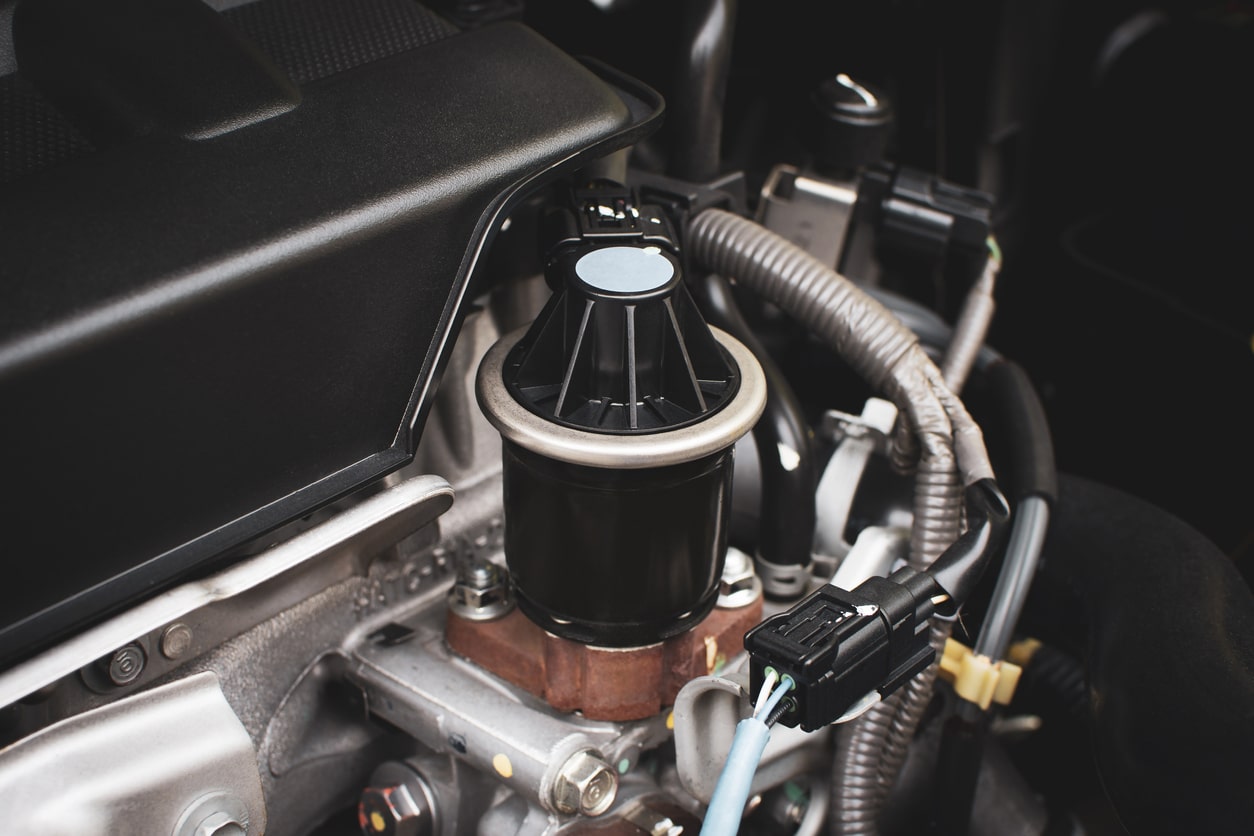When your car’s battery is flat, a jump start is what you need to get back on the road. This gives the battery enough power to crank the engine, after which you can disconnect the power supply and the engine will recharge the dead battery, so you can be on your way.
Some drivers choose to keep a set of jump leads in their car in case of a flat or low battery, or to offer help to fellow motorists in need. However, if you’ve never done a jump start before it’s best to read up on it before you get a flat battery, so you’re not stranded at the roadside in an emergency.
Here, we offer a complete guide to jump starting a car, including how it’s done, advice on safety, and steps on how to start your engine with a booster pack. We’ve added links to different sections of the guide, so you can jump ahead and get the advice you need.
Table of contents:
- Tips for a Safe Jump Start
- What You’ll Need to Jump Start a Car
- How to Jump Start a Car in 8 Steps
- How to Safely Remove Jump Leads
- Jump Starting a Car: Your Questions Answered
Tips for a Safe Jump Start
Jump starting a car has its risks, but follow the safety guidance below and you should find it easy to get your car going safely. Here are our practical tips for a safe jump start:
- Check the condition of the jump leads and both batteries. If you spot signs of rust, corrosion or damage, don’t attempt a jump start as you could hurt yourself or damage either one of the cars. Click here for advice on checking the condition of your car’s battery.
- For complete peace of mind, carry a pair of rubber gloves with your jump leads to mitigate the risk of electric shock.
- Make sure the other car is parked close enough so that the jump cables aren’t pulled tight. If you’re stranded at the side of a busy road, use extra caution and consider calling for professional breakdown assistance, who’ll be able to start the car more quickly and safely.
- Remove rings, bracelets or other metal items from your person, and avoid leaning over the battery and jump cables if you’re wearing a belt with a metal buckle.
- Keep checking the temperature of the jump cable plastic casing when they’re connected to both batteries. If they get hot, remove them safely and call for professional help.
What You’ll Need to Jump Start a Car
Despite seeming like a specialist job, jump-starting a car is a task that can be carried out by almost anybody with a little bit of know-how. The only equipment needed to jump-start your car is a set of high-quality jump leads and a donor battery in a good samaritan’s vehicle.
How to Jump Start a Car in 8 Steps
Once you know the basics, jump starting a car is a straightforward and non-scary roadside fix. Here, we show you how it’s done in eight simple steps.
Step 1: Turn off the electronics – Make sure all electronics are switched off, including lights, heated seats and the infotainment system. These put additional strain on the battery, so more power is required at start up.
Step 2: Get the cars as close as possible – Position the other car as close to your own as possible, without the vehicles touching or obstructing the road. Remember, the jump leads shouldn’t be pulled tight. Depending on the car, the battery could be located somewhere else, so check before manoeuvring.
Step 3: Switch off both cars – Once you’ve switched off both cars, pop the bonnets, remembering to turn off any electronics in the dead car before removing the key from the ignition.
Step 4: Attach the positive clamps – Attach the red clamp of the jump leads to the terminal marked ‘+’ on the car with the flat battery. Then, attach the other end of it to the ‘+’ terminal on the live battery.
Step 5: Attach the negative clamps – Connect the black jump lead to a piece of exposed, unpainted metal on the dead car, well away from the battery. This could be anything from the bonnet catch to the engine cradle and is used as a way of earthing the power. Then, attach the other end to the negative terminal of the live battery (marked ‘-‘).
Step 6: Start the engine on the live car – You should then leave it to idle for around five minutes. Revving isn’t needed.
Step 7: Try starting your car – If the battery was completely drained of power, you may need to give it a touch of power while turning the ignition. If it doesn’t start straight away, don’t turn the ignition for longer than a few seconds as this could flood the engine. For non-starters, try re-adjusting the position of the black cable so it has a good contact with bare metal. If this doesn’t work, you could be looking at a more serious problem.
Step 8: Remove the jump leads in the following order – If your previously dead car starts as normal, you can now remove the jump leads.
How to Safely Remove Jump Leads
Removing jump leads must be done in a specific order in order to avoid damaging the batteries. The cables should be removed in the following order:
- Black lead from unpainted metal surface
- Black lead from negative terminal on live battery
- Red lead from positive terminal on live battery
- Red lead from positive terminal on flat (but hopefully now running) battery
Jump Starting a Car: Your Questions Answered
How long should I drive for after jump starting my car?
Once you’ve got the engine going, it’s time to get some power back in the battery. Drive for at least 20 minutes on fast roads or 40 minutes on slower roads in town to make sure the battery is fully charged, making sure you avoid switching off the ignition during this time.
After driving around to charge the battery, you should find that the car starts easily the next time you drive. However, if the problem was caused by something other than leaving electronics on while parked, you may need to take the car to a mechanic who will help diagnose any outstanding battery or alternator issues.
Can you jump start a car without leads?
If your car battery dies and you’ve not got any jump leads in your boot (rookie error), then you may have to resort to a push start. A push start is when your wheels turning will start the engine once the clutch is engaged.
To achieve a push-start, put the car into first gear and hold the clutch in. Then push, roll or tow the car up to approximately 10mph and smoothly lift off the clutch.
This option is only available on manual transmission vehicles and should be approached as a last-ditch solution only.
Will a jump start damage my car?
It’s extremely unlikely that you’ll damage your car while jump starting the engine. That’s because 12V batteries lack the power to cause significant damage to electronic components, and usually feature anti-surge protection to prevent any power issues when charging.
However, if you accidentally connect the jump leads the wrong way, this could damage the battery on either car or blow a fuse, particularly those connected to the lights. Always check before connecting jump leads to make sure you have the right cables on the correct terminals, and that they’re connected in the right order.
Is it safe to jump start a car in the rain?
Everyone knows that water and electricity don’t mix, but that being said, it is safe to jump start a car in the rain. Most car batteries run at about 12V, which is a fraction of the power supplied to a house (around 230V), and therefore presents little in the way of risk. Just follow our practical steps and safety advice, and you can get back on the road in even the most miserable of downpours.
Can you jump start an automatic car?
Despite having different transmissions and drivetrains, it is still possible to jump-start an automatic car. The method listed in this guide applies to both manual and automatic vehicles.
As we specified earlier, it isn’t possible to push-start an automatic vehicle.
Can you jump start an electric car?
Electric cars use two batteries to operate. The first battery is designed to provide power to the motor to move the vehicle along the road. The second battery is there to provide electricity to things such as lights, infotainment systems, and windscreen wipers amongst other things.
The second battery also performs the task of starting the car, so if that battery is dead it can be jumpstarted using another vehicle in the same way that a petrol or diesel car would be.
For more advice on getting your car started, check out our comprehensive guide on what to do when your car won’t start on a cold morning or visit the blog for more practical motoring guides.
From Tyreweld to Bradex Easy Start, our DIY car maintenance products are designed to get you back on the road after an emergency breakdown, so car issues needn’t ruin your day. For more information, head to the Holts homepage.
